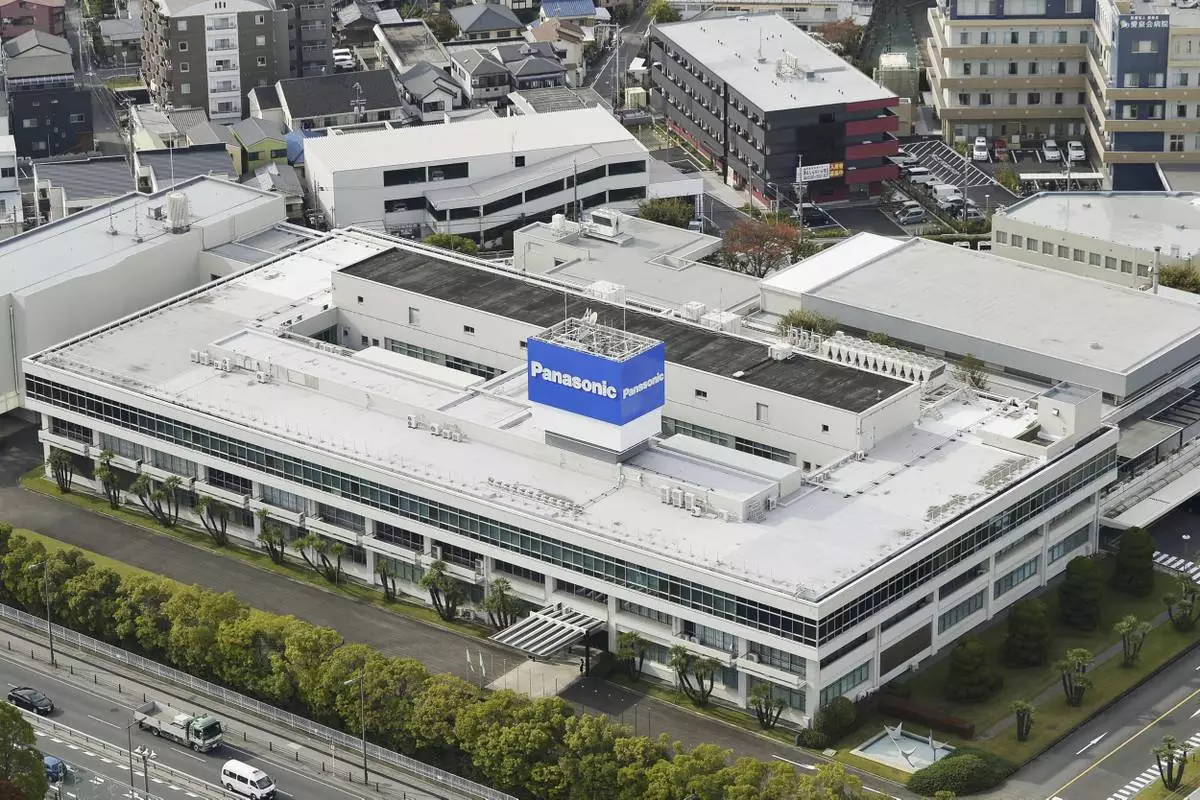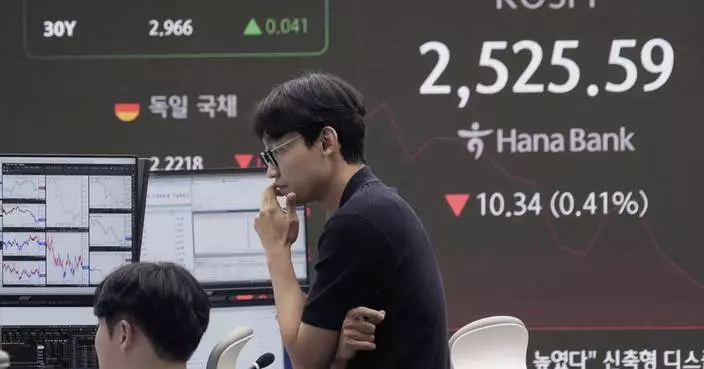BEIRUT (AP) — Lebanon’s militant Hezbollah group launched one of its deepest strikes into Israel in mid-May, using an explosive drone that scored a direct hit on one of Israel’s most significant air force surveillance systems.
This and other successful drone attacks have given the Iranian-backed militant group another deadly option for an expected retaliation against Israel for its airstrike in Beirut last month that killed top Hezbollah military commander Fouad Shukur.
“It is a threat that has to be taken seriously,” Fabian Hinz, a research fellow at the International Institute for Strategic Studies, said of Hezbollah's drone capability.
While Israel has built air defense systems, including the Iron Dome and David’s Sling to guard against Hezbollah's rocket and missile arsenal, there has been less focus on the drone threat.
“And as a result there has been less effort to build defensive capabilities” against drones, Hinz said.
Drones, or UAVS, are unmanned aircraft that can be operated from afar. Drones can enter, surveil and attack enemy territory more discreetly than missiles and rockets.
Hezbollah proclaimed the success of its May drone strike, which targeted a blimp used as part of Israel's missile defense system at a base about 35 kilometers (22 miles) from the Lebanon border.
The militants released footage showing what they said was their explosive Ababil drone flying toward the Sky Dew blimp, and later released photographs of the downed aircraft.
Israel’s military confirmed Hezbollah scored a direct hit.
“This attack reflects an improvement in accuracy and the ability to evade Israeli air defenses,” said a report released by the Institute for National Security Studies, an independent think tank affiliated with Tel Aviv University.
Since the near daily exchange of fire along the Lebanon-Israel border began in early October, Hezbollah has used drones more to bypass Israeli air defense systems and strike its military posts along the border, as well as deep inside Israel.
While Israel has intercepted hundreds of drones from Lebanon during the Israel-Hamas war, its air defense systems are not hermetic, an Israeli security official said. Drones are smaller and slower than missiles and rockets, therefore harder to stop. That's especially true when they are launched from close to the border and require a shorter reaction time to intercept.
The official, who was not authorized to speak publicly in line with Israeli security restrictions, said Israeli air defense systems have had to contend with more drones during this war than ever before, and Israel responded by attacking launch points.
On Tuesday, a Hezbollah drone attack on an Israeli army base near the northern city of Nahariya wounded six people. One of the group’s bloodiest drone attacks was in April, killing one Israeli soldier and wounding 13 others plus four civilians in the northern Israeli community of Arab al-Aramsheh.
Hezbollah also sent surveillance drones that filmed vital facilities in Israel’s north, including in Haifa, its suburbs and the Ramat David Airbase, southeast of the coastal city.
While Hezbollah leader Hassan Nasrallah has boasted the militant group can now manufacture its own drones, its attacks so far have mainly relied on Iranian-made Ababil and Shahed drones. It has also used a drone, at least once, that fires Russian-made S5 guided missiles.
Hezbollah’s increasing capabilities have come despite Israel killing some of its most important drone experts.
The most high-profile was Shukur, who Israel said was responsible for most of Hezbollah’s most advanced weaponry, including missiles, long-range rockets and drones.
In 2013, a senior Hezbollah operative, Hassan Lakkis, considered one of its drone masterminds, was shot dead south of Beirut. The group blamed Israel. More recent strikes in Syria attributed to Israel killed Iranian and Hezbollah drone experts, including an official with the Iranian paramilitary Revolutionary Guard’s aerospace division.
In its early days, Hezbollah used lower-tech tactics, including paragliders, to attack behind enemy lines.
After Israel withdrew from southern Lebanon in 2000 after an 18-year occupation, Hezbollah began using Iranian-made drones and sent the first reconnaissance Mirsad drone over Israel’s airspace in 2004.
After the 34-day Israel-Hezbollah war in 2006, Lakkis, the Hezbollah drone mastermind, took charge of the drone program.
Hezbollah increased its use of drones in reconnaissance and attacks during its involvement in Syria’s conflict. In 2022, as Lebanon engaged in indirect negotiations to demarcate its maritime border with Israel, the group sent three drones over one of Israel’s biggest gas facilities in the Mediterranean before they were shot down by Israel.
Hezbollah's drone program still receives substantial assistance from Iran, and the UAVs are believed to be assembled by experts of the militant group in Lebanon.
“Since Iran has not been able to achieve aerial supremacy, it has resorted to such types of aircraft,” said retired Lebanon general and military expert Naji Malaaeb referring to drones. He added that Russia has benefited from buying hundreds of Iranian Shahed drones to use in its war against Ukraine.
In February, the Ukrainian intelligence service said that Iranian and Hezbollah experts were training Russian troops to operate Shahed-136 and Ababil-3 drones at an air base in central Syria. Russia, Iran and Hezbollah have a military presence in Syria, where they have been fighting alongside Syrian President Bashar Assad’s forces.
In a 2022 speech, Nasrallah boasted that “we in Lebanon, and since a long time, have started producing drones.”
The Lebanese militant group still apparently relies on parts from Western countries, which could pose an obstacle to mass production.
In mid-July, three people were arrested in Spain and one in Germany on suspicion of belonging to a network that supplied Hezbollah with parts to build explosive drones for use in attacks in northern Israel.
The Spanish companies implicated, like others in Europe and around the world, purchased items, including electronic guidance components, propulsion propellers, gasoline engines, more than 200 electric motors and materials for the fuselage, wings and other drone parts, according to investigators.
Authorities believe Hezbollah may have built several hundred drones with these components. Still, Iran remains Hezbollah’s main supplier.
“Israel’s air force can fire missiles on different parts of Lebanon, and now Hezbollah has drones and missiles that can reach any areas in Israel,” Iranian political analyst and political science professor Emad Abshenass said. He added that as the U.S. arms its closest ally, Israel, Iran is doing the same by arming groups such as Hezbollah.
Associated Press writer Julia Frankel contributed to this report from Jerusalem.
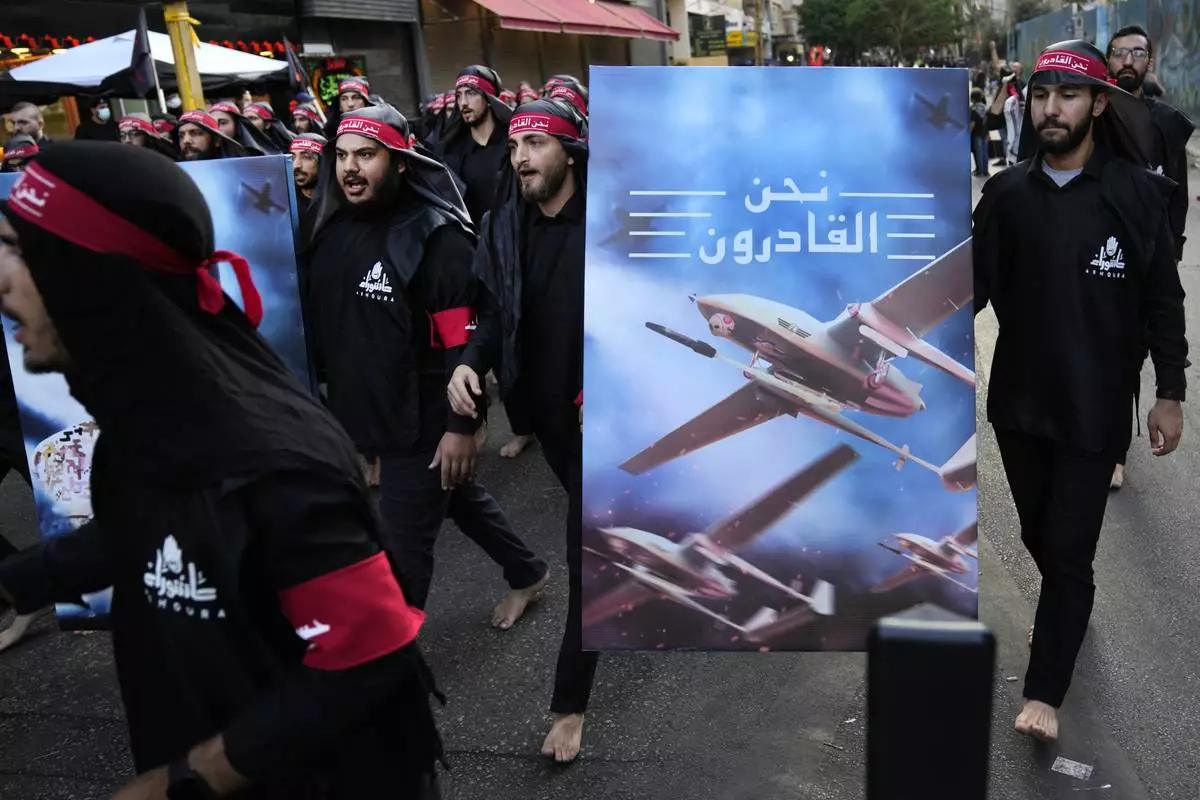
Members of Iranian-backed Hezbollah group walk barefoot as they carry a poster showing Hezbollah drones that read, in Arabic: "We are coming," during the holy day of Ashoura, which commemorates the 7th century martyrdom of the Prophet Muhammad's grandson Hussein, in the southern suburb of Beirut, Lebanon, Tuesday, Aug. 9, 2022. (AP Photo/Hussein Malla, File)
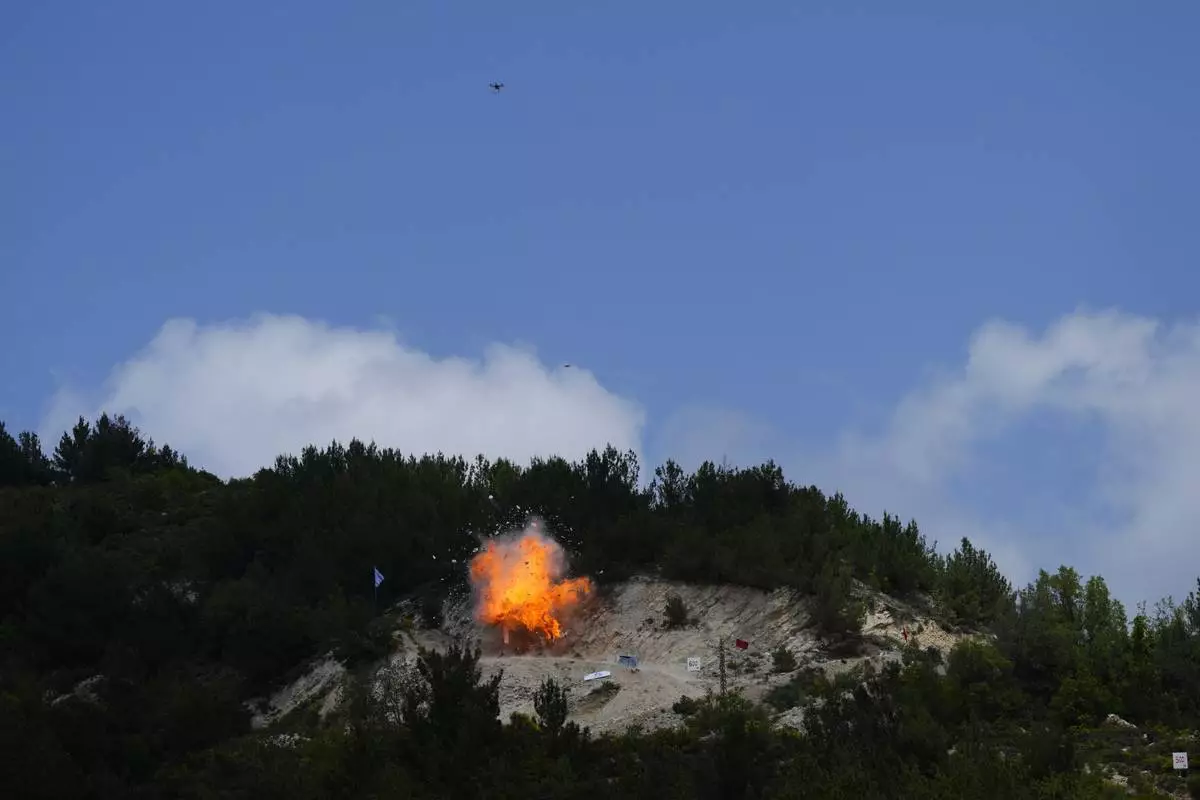
An explosion from a drone strike causes a ball of fire as fighters from the Lebanese militant group Hezbollah carry out a training exercise in Aaramta village in the Jezzine District, southern Lebanon, on May 21, 2023. I (AP Photo/Hassan Ammar, File)
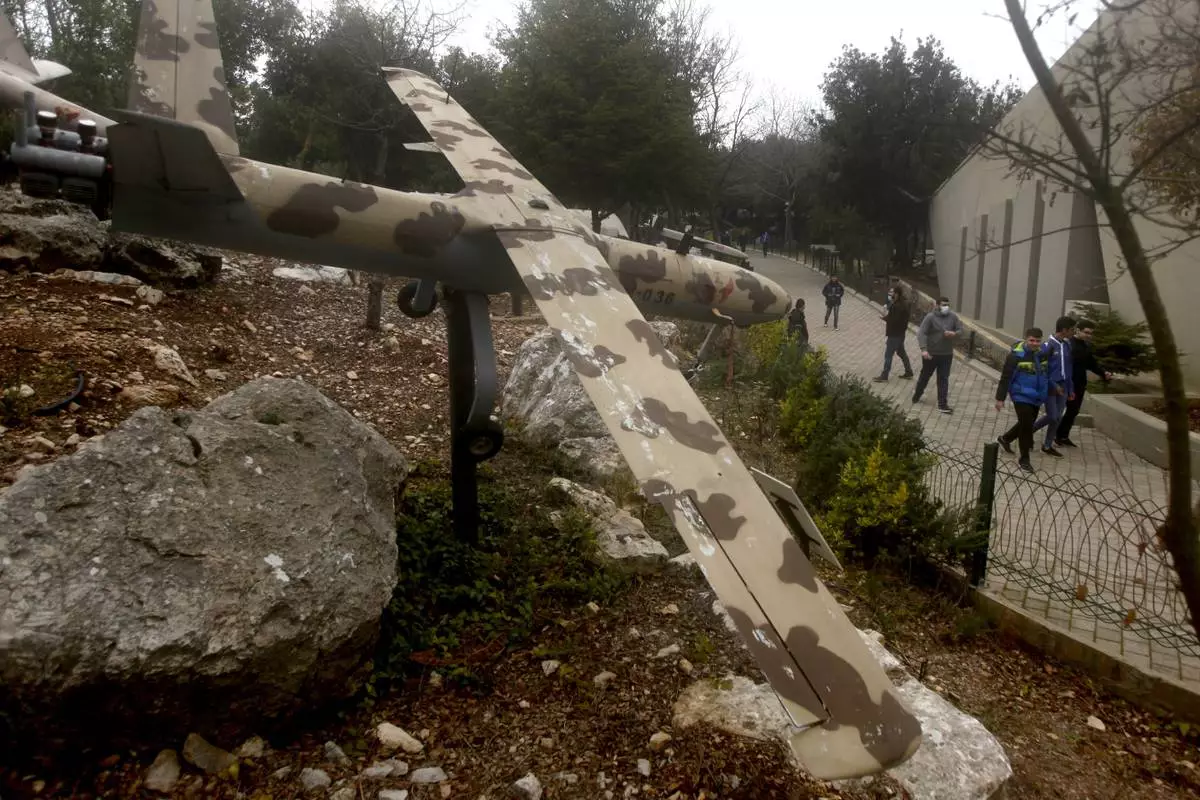
People pass by a replica drone in a war museum operated by Hezbollah in Mlita village, southern Lebanon, on Feb. 19, 2022. (AP Photo/Mohammed Zaatari, File)
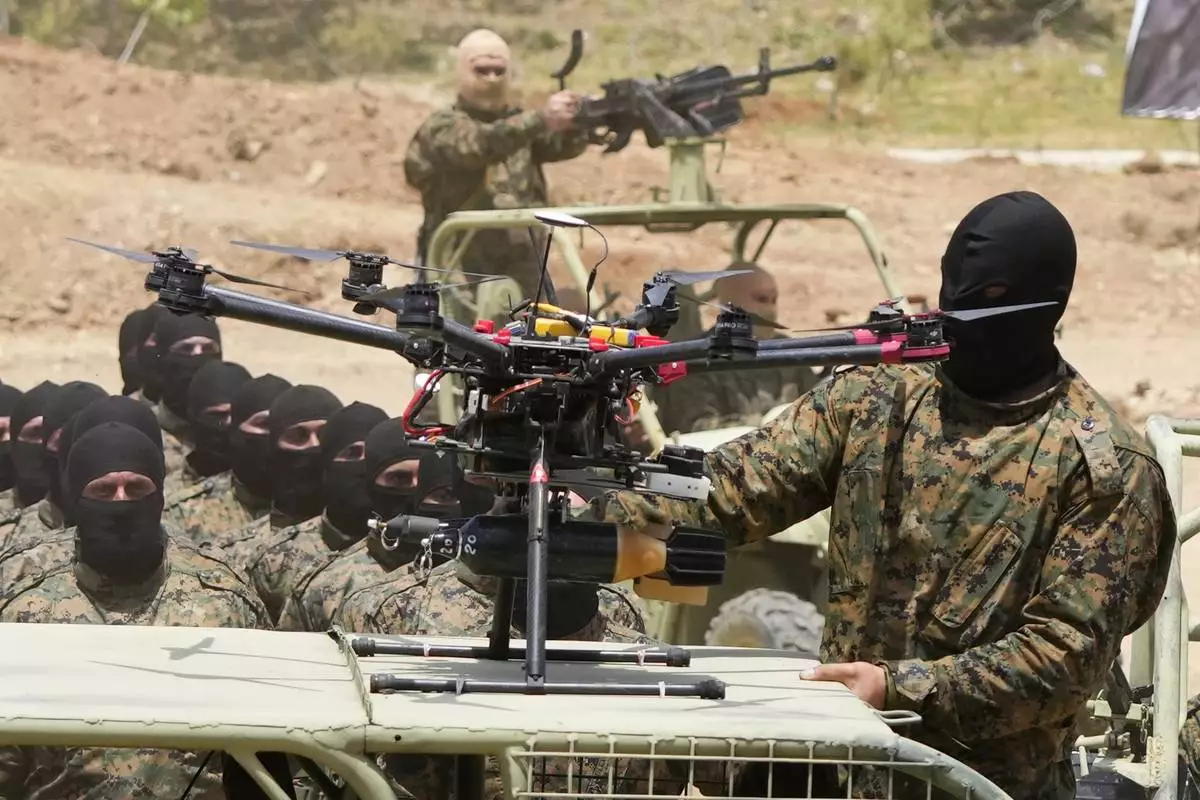
A Hezbollah fighter stands next to an armed drone during a training exercise in Aaramta village in the Jezzine District, southern Lebanon, on May 21, 2023. . (AP Photo/Hassan Ammar)
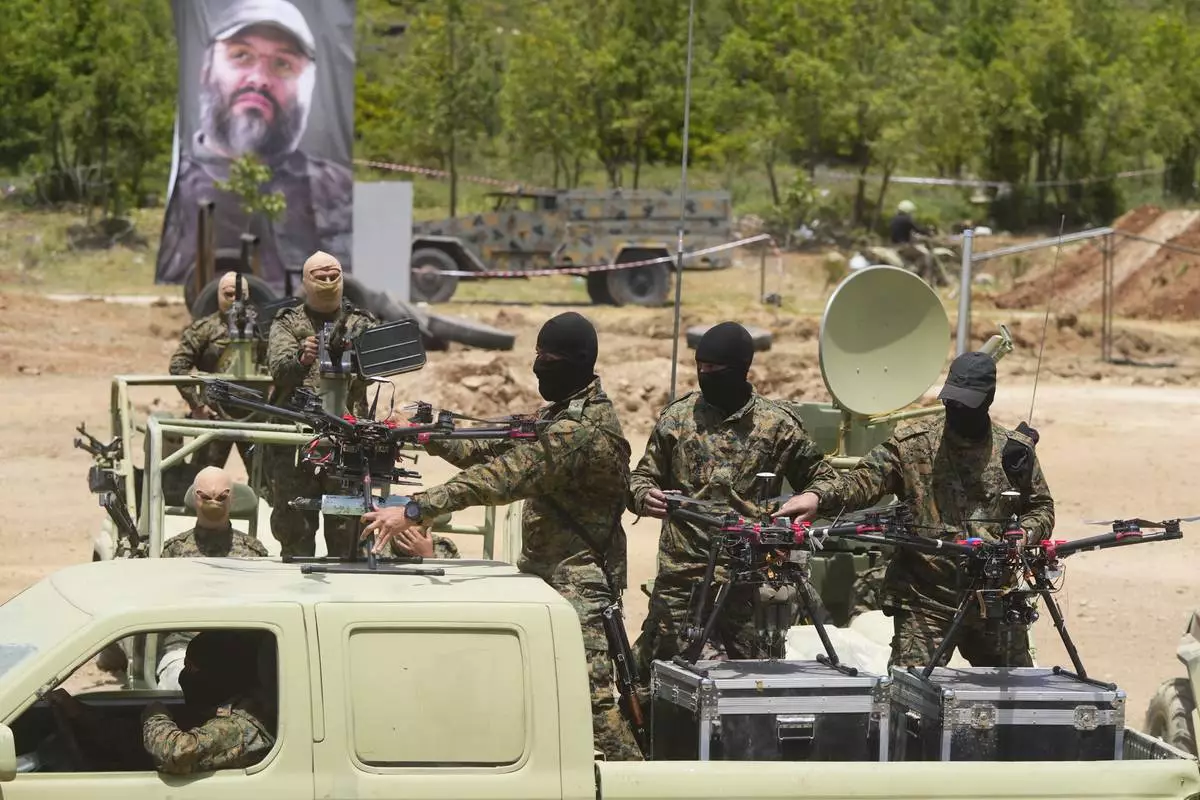
Hezbollah militants take part in a military exercise with armed drones in Aaramta village in the Jezzine District, southern Lebanon, on May 21, 2023. (AP Photo/Hassan Ammar)








